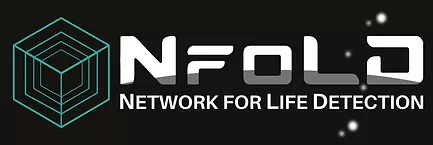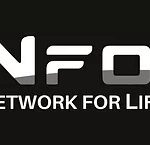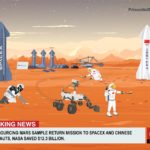Cite as: Benner, S. A. (2022) “Science traceability matrices. Organized thinking, or organized biases?”. Primordial Scoop, e20220325. https://doi.org/10.52400/BTSP5605
Tuesday session of the workshop on the “Future of Life Detection”, sponsored by NASA’s Network for Life Detection (NfoLD), prompts this discussion of a favorite topic of mine. Not only on Primordial Scoop, but also dating back to my Ph.D. dissertation: Can a process framework be imposed on scientific inquiry to speed the creation of new ideas?
Those running the NfoLD Workshop evidently think that the answer is “yes”. And they have a very specific framework in mind, something called a “science traceability matrix”, a STM.
The STM is very much a “NASA thing”. It is intended to force engineers, who are good at building “cool gadgets”, to change their focus from what they love (building cool gadgets) to a focus on scientific questions. This so that the cool gadget can answer a question that someone might actually want to have answered.
As a scientist, not an engineer, I am all in favor.
But as a scientist, I also understand how my brain operates. It is loaded with presumptions and assumptions, a necessary level of ignorance (one cannot know everything), and a primate tendency towards confirmation bias. Most of the time, I do not even recognize my assumptions, my biases, or my ignorance. As I detailed in my book Life, the Universe, and the Scientific Method (with cartoons by Jake Fuller), experiments, observations, and exploration are needed to give me a whack on the head so that I do.
My intellectual limits are, of course, characteristic of my species. Even when Homo sapiens set out in good faith to scope the universe of possibilities, we always seem to come back to where we started. Intellectually, that is. And the fact that you created an STM in the process will often give you the false self-assurance that you did scope out the universe of possibilities. And nothing is more damaging to creativity that being certain about your misconceptions.
To illustrate, read a 2013 document entitled the “Report of the Mars 2020 Science Definition Team”. It attempted a decade ago to do what this week’s NfoLD Workshop is attempting, to drive the design of life detection missions by forcing scientists into the STM intellectual framework. Both then and this week, to find life on Mars.
As you page though its 154 pages, just watch how the brilliance of the introduction gets lost by hidden assumptions based on unconsidered premises, which are then covered over by an STM. Remember, this is written in 2013 to guide missions to Mars in 2020, so you have some perspective. You can say: “Well how did that work out for you folks?”
The Report starts out well enough. Page 6 tells us that the “prime focus over exploration of Mars in the coming decade is to assess if life is or was present on Mars (emphasis added).
“Great,” we say. “After 35 years of NASA lethargy following the 1976 Viking results, NASA is finally getting serious about finding life on Mars”.
Reading into the text, it soon becomes clear that deep inside of their psyches, the authors of this report actually do not constructively believe that life is today present on Mars. Further, the report mentions Viking only twice, once to express relief that payloads in the 2020 future will be larger, later to note that much more information is now available to select landing sites than was available at the time when Viking’s landing sites were chosen.
No mention is made of the results from Viking that suggested the presence of extant life, not even to criticize them. As you know from my post yesterday, NASA maintained for decades the conclusion that Viking has ruled out extant life on Mars, a misconception that was held with certitude.
And so by page 9, that psyche had transformed the mission to be one to “collect samples with possible evidence of past martian life” [emphasis added]. And then (page 10) to looking for “places that have a high potential for preserving signs of life”. The goal then became “to create a legacy for future generations of scientists and explorers”. The STM then devolves into a fairly standard geological project plan.
From there, it is a hop-skip-jump to flying “cool gadget” drones around Mars “to prove that we can fly on Mars.”
All while Martian microbial life might be present for the finding just a few meters below the Martian surface.
The Tuesday NfoLD presentations from 14 breakout panels represent a tour de force of effort on the part of the workshop participants. Their first charge was to take a collection of conventional biosignature concepts (chirality, elemental composition, amino acids, lipids, metabolism), to fit them into a taxonomy (or to remark if they did not fit), and to make interconnections between them. Both the concepts and the taxonomy seemed to come from the Workshop.
Entirely reasonable. But for creativity, very dangerous. The concepts are all standard stuff, dating back 50 years. Already, the organizers are building the box. And an STM may not let you escape from it.
For this reason, it is instructive to take apart the thoughts that emerged on Day 2, to look for the influence of hidden assumptions in the work product. And then look in a day or two later to see whether the thought process imposed by the Workshop avoided the pitfall.
So I am not seen to criticize anything or anyone selectively, let me use as a prompt the first box on the slide of the first group. Any other line from the slides of any other of the 14 breakout groups would be as good. But here:
• The biological indicator was “Polymers for information storage/transport (RNA, DNA)
• The category of the bioindicator in the organizer-director taxonomy was “Chemistry (molecular structure, isotope ratio patterns, abundance)”.
• For “pairing” in the matrix under construction, the box remarked that that this would require “adequate containment controls”. Explaining, the presenter noted that this indicator “stood on its own as a good bioindicator” but “we would actually need some pretty adequate contamination controls to make sure we did not bring it with us from Earth.”
So here is some homework. Analyze this for unstated assumptions. I will get back to you tomorrow with some thoughts. And we will see whether the NfoLD STM framework picked them up.



